Composite is tooth-colored filling material. Composite filling material, a combination of plastic and glass spheres, has been used for over 60 years. Dentists in the U.S. place more than 122 million dental composites each year. Many dentists today have stopped placing amalgam (aka silver or mercury) fillings for various reasons.
At Cook Family Dentistry, I no longer place amalgam restorations because in order to do so, I have to remove much more tooth structure and the tooth is left at a higher risk of breakage.
Benefits of composite filling material:
- They are bonded to the tooth structure:
- this blocks out bacteria, acids, sugar, saliva from leaking between the filling
material and the tooth - bonding also helps support the remaining walls of the tooth
- this blocks out bacteria, acids, sugar, saliva from leaking between the filling
- A composite filling can be more narrow and shallow with amalgam/silver fillings because composite is a more flexible material and is bonded into place instead of being held in by mechanical retention only, which undercuts the remaining walls of the tooth.
- Composite can be repaired because it will bond to itself. Amalgam does not bond to itself.
- Composite is tooth-colored, so dark decay that may start to grow in the tooth later can be differentiated from the filling. Amalgam/silver fillings camouflage new decay in x-rays and also upon visual examination.
- Esthetics. Composite fillings are matched to the shade of the natural tooth.
Here are step-by-step photos of the process of removing an old leaking amalgam filling and replacing it with composite:
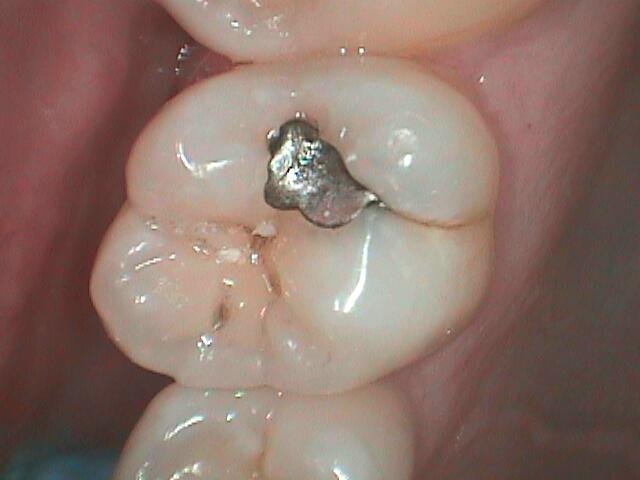
Before: Old amalgam filling, leaking around the edges. Decay starting in pits and fissures.
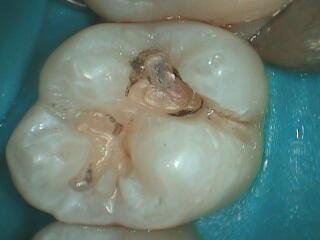
Looking under the old filling. The tooth is partially cleaned out here.
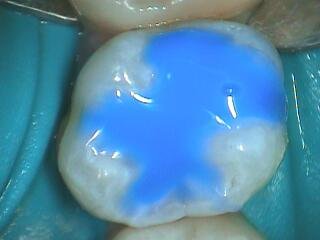
A cleaning solvent removes surface debris, bacteria, and saliva while creating a rough surface to increase the bond strength of the new filling to the tooth surface.

Bonding agent is brushed into the clean surface.
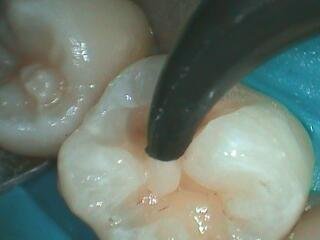
Tooth-colored composite filling material that matches the tooth shade is injected into the tooth.
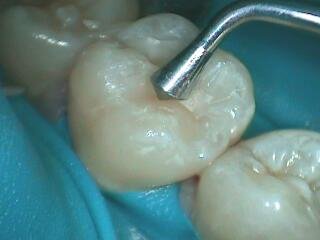
The soft composite filling material is packed into place and sculpted before it is hardened with a blue curing light.

A thin coat of flowable filling material is applied to the filling to better seal the margins of the filling/tooth.

After the filling is hardened, we mark the bite to identify high spots.
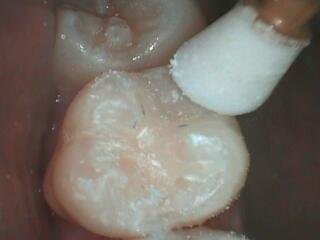
Polishing the filling and removing high spots.
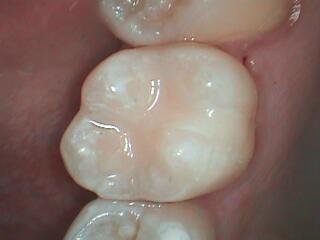
The finished product. Healthy tooth structure, conservatively cleaned and well-sealed. The tooth surface is now smooth and cleansible to a toothbrush. (no narrow grooves for bacteria to hide in).
In this example of a filling we placed in my office, you can see how a silver filling shows through the tooth and makes it look black/grey.
Before:

After:
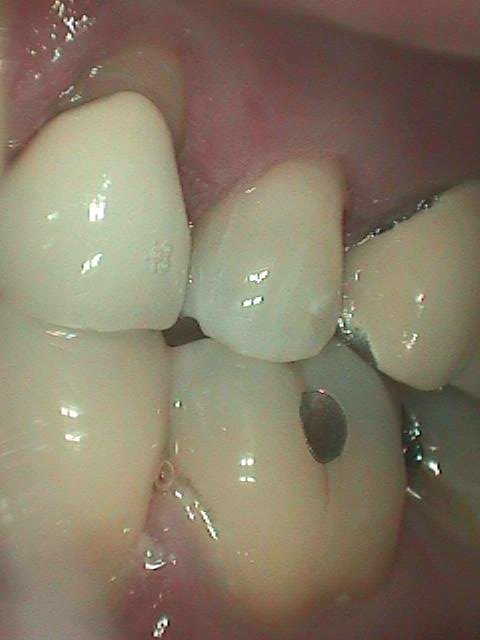
Before:

After:
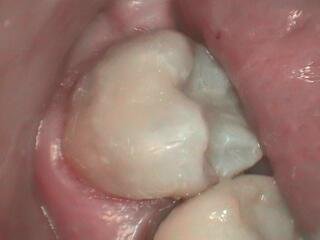
Smiles,
Dr. Cook

